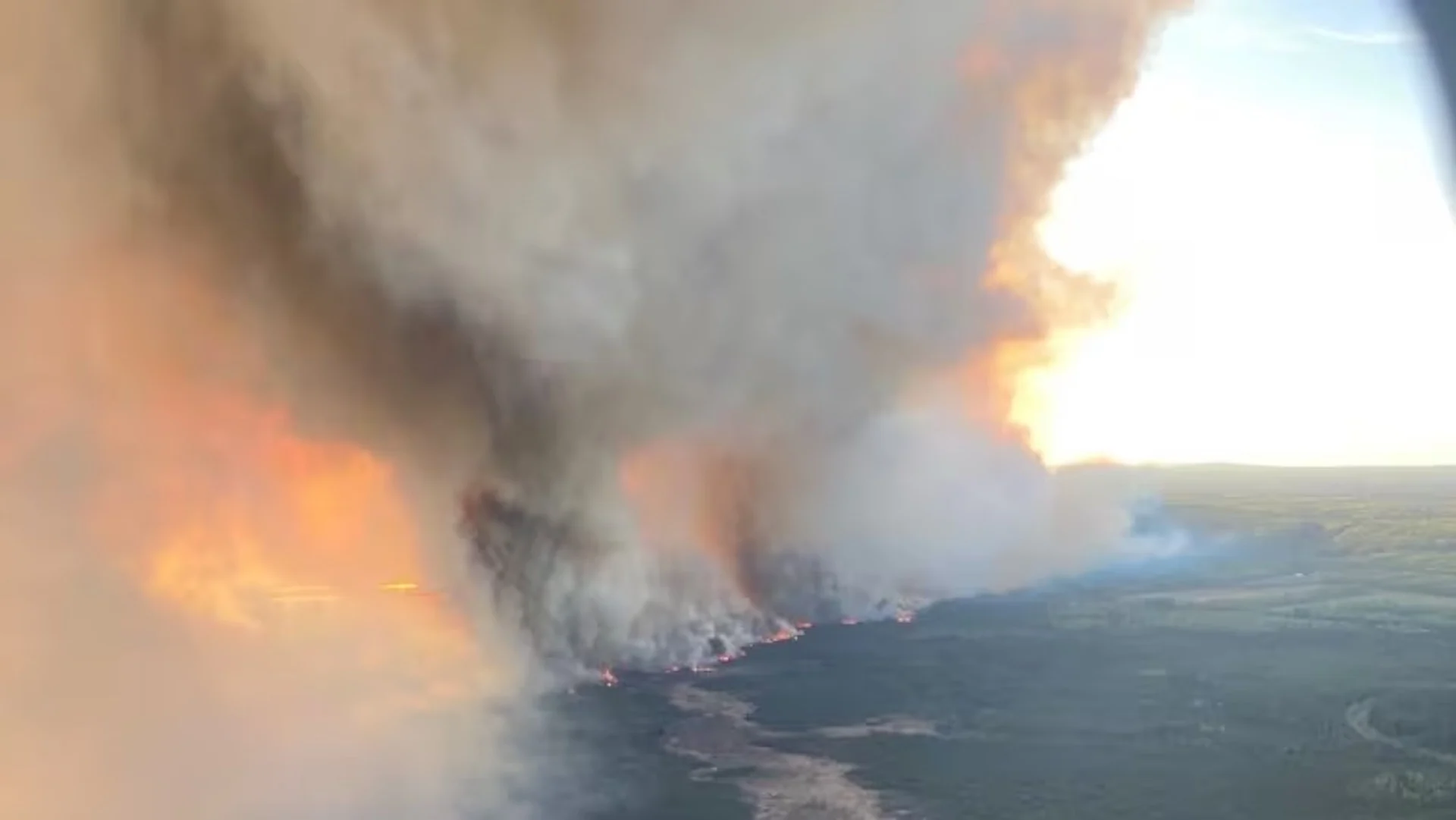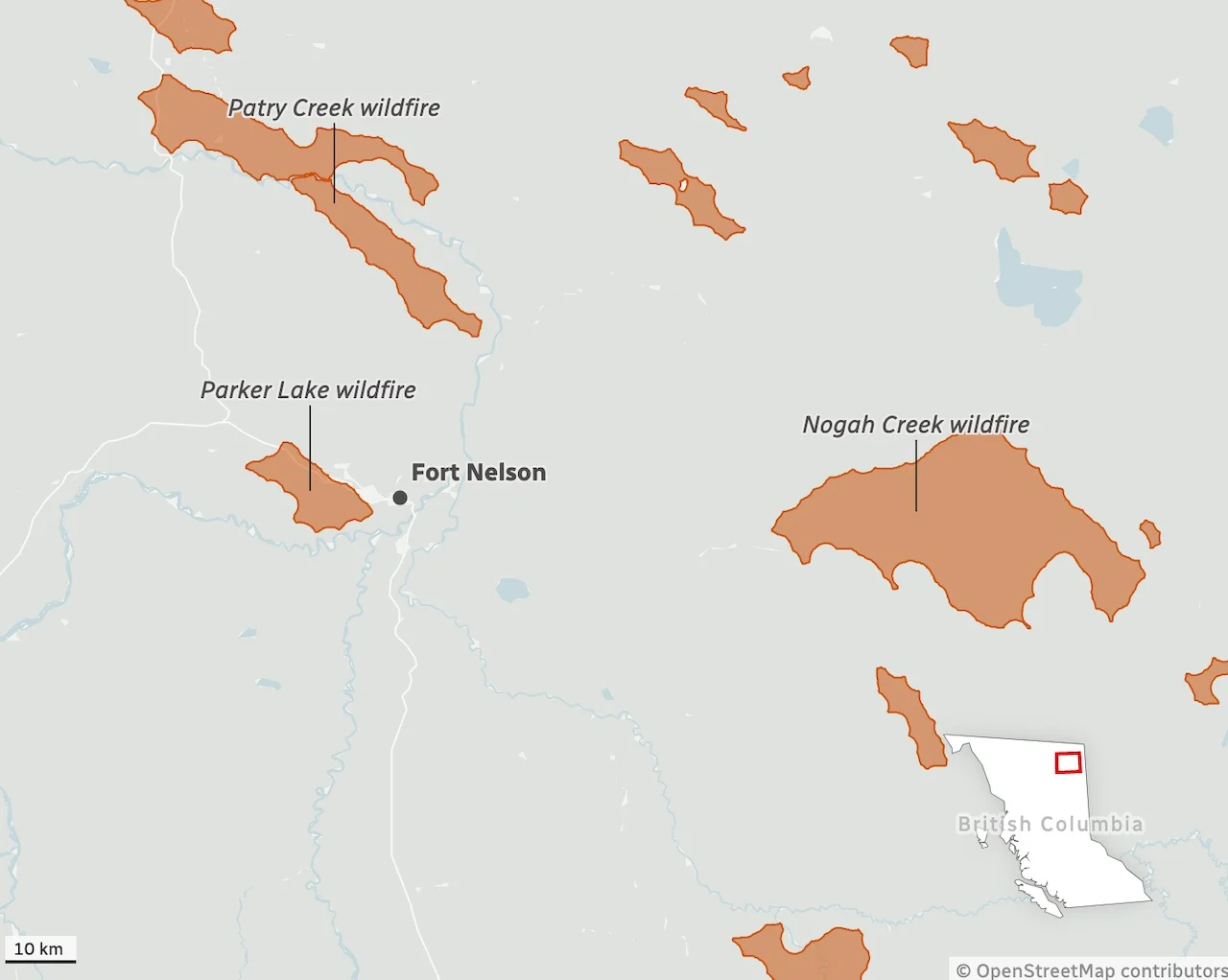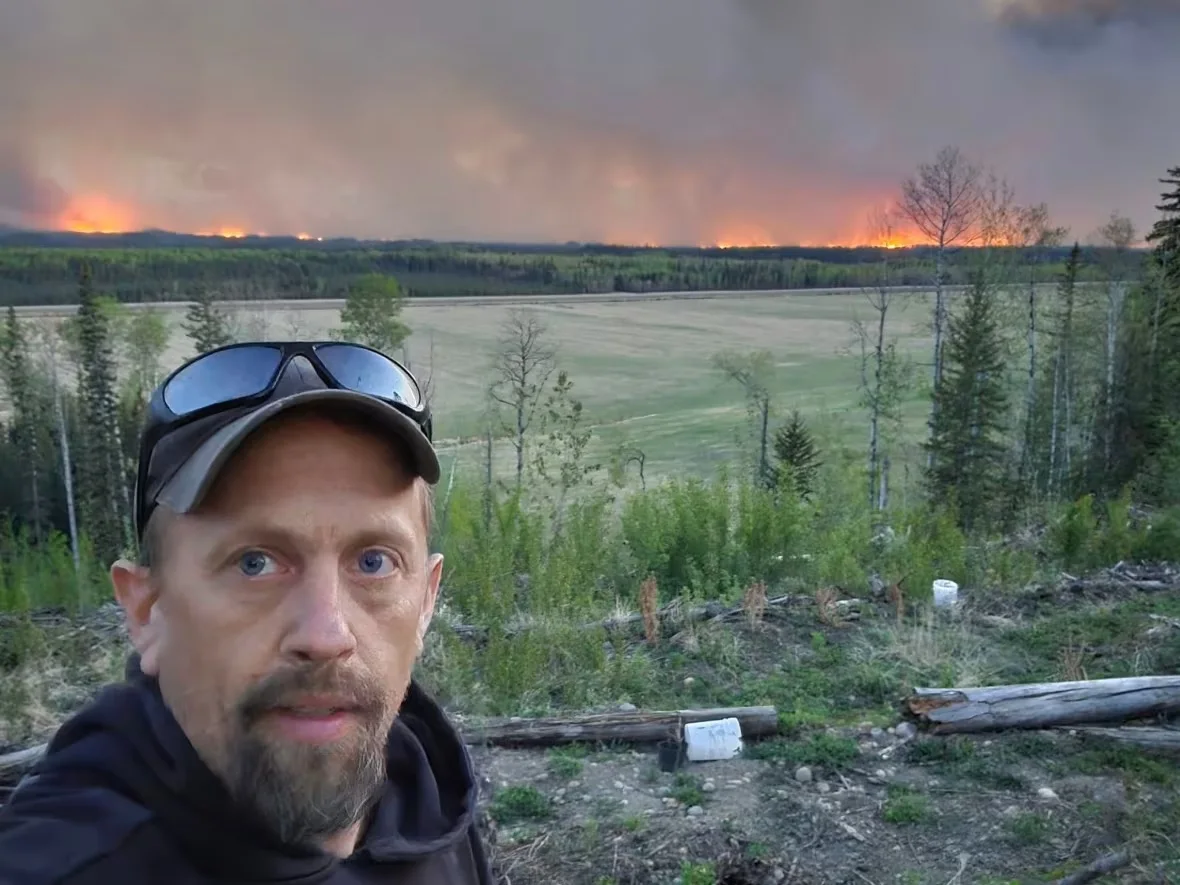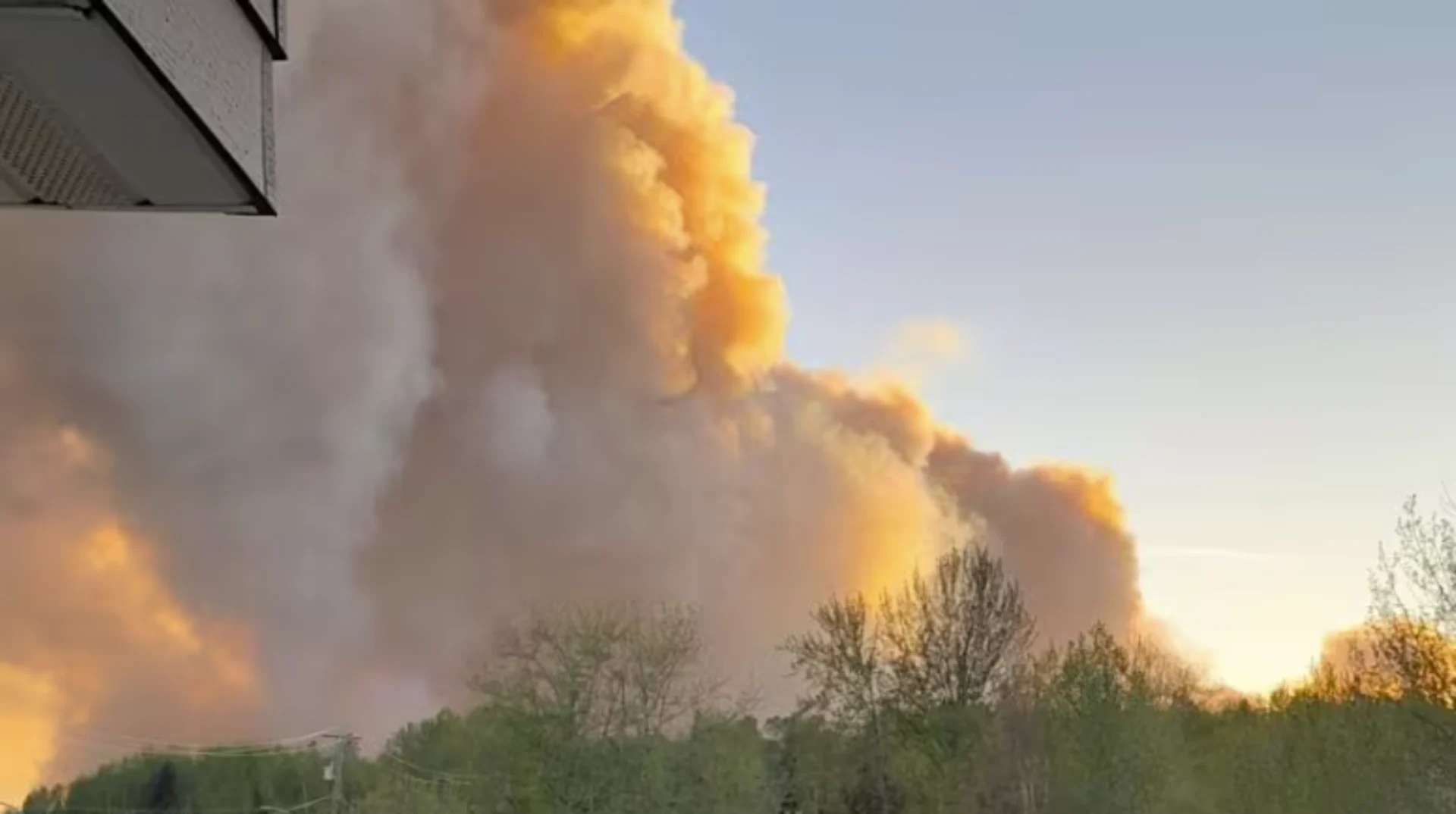
More evacuations ordered as wildfire closes in on Fort Nelson
The latest:
The Parker Lake wildfire continues to approach Fort Nelson, B.C., and was about 1.5 kilometres outside of town just before 7 a.m. MT Monday, according to the regional mayor. The B.C. Wildfire Service gave its proximity as 2.5 kilometres.
More properties in the 292 Subdivision and south to the North River Midstream gas plant were ordered to evacuate on Monday due to the Parker Lake fire and another fire 20 kilometres to the north.
B.C. Minister of Emergency Preparedness Bowinn Ma says fire crews are facing an "extremely challenging" 48 hours ahead with the possibility of "volatile" fire behaviour.
Officials warned Monday that winds are likely to continue pushing the Parker Lake fire toward Fort Nelson through the day.
The wildfire had grown in size to nearly 53 square kilometres as of Sunday evening.
Residents who did not evacuate were told there would be no help available after noon Sunday.
How to find the full list of wildfires, highway closures and evacuation orders and alerts.
The fast-moving wildfire threatening Fort Nelson, B.C., has prompted more evacuation orders as officials warn of "extremely challenging" fire conditions in the region.
High winds have continued to drive the Parker Lake fire — last measured at 53 square kilometres — toward the town and the Fort Nelson First Nation in northeastern British Columbia, according to B.C. Wildfire Service (BCWS).
On Monday morning, the Northern Rockies Regional Municipality (NRRM) and Fort Nelson First Nation upgraded evacuation alerts to evacuation orders for 80 more properties due to the Parker Lake fire and the Patry Creek holdover fire, about 20 kilometres north of the town.
The evacuation area now covers the entire 292 Subdivision and all properties south to the North River Midstream gas plant, the NRRM said in a social media post.

The Parker Lake wildfire grew quickly after being first spotted in the late afternoon of May 10. (Canadian Wildland Fire Information System (Graeme Bruce/CBC)
CANADA'S WILDFIRES: Visit The Weather Network's wildfire hub to keep up with the latest on the active start to wildfire season across Canada.
And as Patry Creek and another holdover fires also burn out of control in the area, B.C. officials say wildfire fighters are facing "extremely challenging" conditions to protect communities in the region as winds are expected to pick up.
"We may begin to see volatile wildfire activity later this afternoon," Minister of Emergency Preparedness and Climate Readiness Bowinn Ma told reporters in Victoria on Monday morning.
She said the fire was 2.5 kilometres from the town.
"Let's just say we are extremely concerned," she added.

Heavy smoke is visible from an out of control wildfire that prompted instructions for several neighbourhoods in Fort Nelson to evacuate on Friday night. (Submitted by Angela Klondike)
Whether the fire reaches the town depends on the weather, said NRRM Mayor Rob Fraser, who said earlier Monday that the flames were just 1.5 kilometres from its western perimeter.
"The forecast that I hear is that we're going to get a westerly flow which could bring the fire closer to the community if it gets up to what it was like on Friday," Fraser told CBC News shortly before 7 a.m. MT Monday.
"We're trying to keep the fire away from the high fuel areas, so it's all hands on deck."
Two holdover fires also growing rapidly
The Parker Lake fire prompted orders for the nearly 4,700 people living in Fort Nelson and the nearby Fort Nelson First Nation to evacuate on Friday, days after two other massive holdover fires to the north and east of the town reignited and prompted evacuation alerts.
The out-of-control Nogah Creek fire has grown to more than 600 square kilometres since it was reignited on May 5, BCWS said. It is burning approximately 60 kilometres east of Fort Nelson.
The Patry Creek holdover fire reignited on May 2 and has grown to 34 square kilometres as of Saturday night, according to the BCWS website. It is also considered out of control.

Ian Langstaff says he has stayed behind to protect his property from the Parker Lake fire because he has 'too much to lose.' He called two other holdover fires in the area 'big monsters' and said he and his wife are hoping neither of them come to the town's doorstep as well. (Submitted by Ian Langstaff)
Both fires prompted evacuation alerts in and around Fort Nelson and the First Nation last week.
But the situation quickly deteriorated when winds blew a tree down onto a power line and sparked the Parker Lake fire just nine kilometres west of the town Friday afternoon.
Fraser said as of Monday morning, fewer than 100 households have not heeded evacuation orders and remain in the area.
Ma urged those who have not yet evacuated to do so immediately, saying she understood it was difficult. "We're talking about people's entire lives in some of these homes," she said.
SEE ALSO: Essential items for your emergency "grab-and-go" kit
'Too much to lose'
Ian Langstaff says he stayed behind because he has "too much to lose."
The mechanic has been working to clear flammable brush and debris and dampen the earth along the perimeter of his property about two kilometres north of Fort Nelson.

A wildfire near Fort Nelson, seen here in northeastern B.C., and another blaze near Fort Liard, N.W.T., had caused major telecommunications outages in Yukon and parts of N.W.T. (Submitted by Tony Capot-Blanc)
Langstaff says he worries the two holdover fires are drawing resources away from the Parker Lake fire at the town's doorstep and says BCWS should have done more to extinguish them over the wintertime.
"If we get a bad wind change and it brings one of them toward us, it'll obliterate us," he said.
"So we're battling this small fire right now and just hoping and praying that we don't have to battle one of them two big monsters."
BCWS director of wildfire operations Cliff Chapman says many of the holdover fires were burning deep underground, under layers of snow, and with no heat signature over the winter.
He said they were fuelled by prolonged drought and that B.C. could follow up on how to improve dealing with holdover fires in the future.
"The answer is really in prevention," Chapman said.
Thumbnail image credit to BC Wildfire Service via CBC News.
This article was originally written by Moira Wyton and published for CBC News on Monday, May 13.










